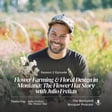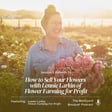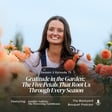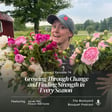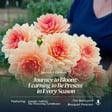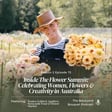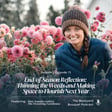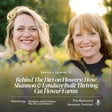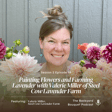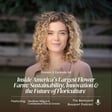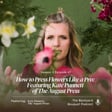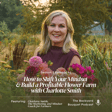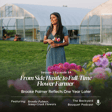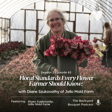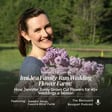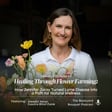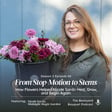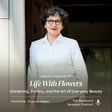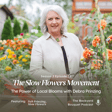
Ep.23: Flower Farming And Sustainable Floral Design: An Interview with Farmer-Florist Heather Staten
Are you curious about what it takes to be a sustainable farmer-florist? In episode 23, we delve into the vibrant world of flower farming with Heather Staten from Heather's Flower Farm in Hood River, Oregon. Heather's journey from an avid gardener to flourishing flower farmer is a testament to her love for the earth and the beauty of cultivation.
In this episode, Heather shares her passion for growing over 250 varieties of flowers and foliage on her family's 18-acre property in Hood River, Oregon. From her commitment to sustainability, using no-till techniques and natural fertilizers, to her dedication to reducing the floral industry's carbon footprint, Heather's Flower Farm is a true example of eco-friendly flower farming.
Discover how Heather's flower farm is a family endeavor, with her husband, Ben, crafting the farm's infrastructure, and their children, Lottie and Jake, actively involved in the field and design. From weddings and events to bouquet subscriptions and farmer's markets, Heather's business model showcases the beauty and joy of locally grown flowers as a sustainable alternative to imported blooms.
Join us in this episode as we explore Heather's insights into the world of flowers, her tips for successful cut flower growing, and the joy of connecting with the season through blooms. Tune in to hear about her unique approach to bouquet subscriptions, the art of floral design, and the beauty of foraging for greenery on her picturesque property.
In This Episode You'll Hear About:
- 00:02:36 - Heather's journey into flower farming
- 00:06:02 - Overview of Heather's business model
- 00:08:42 - Heather's approach to full-service weddings
- 00:14:38 - The value of investing in floral education
- 00:26:44 - Sustainability practices in the wedding industry
- 00:29:39 - Building a hoop house for flower farming
- 00:30:25 - Forcing tulips in a hoop house
- 00:31:57 - Benefits of growing perennials for flower farming
- 00:35:50 - CSA bouquet subscriptions
- 00:43:23 - Benefits of growing perennials for sustainable flower farming
- 00:46:16 - Utilizing foraged greenery for floral arrangements
- 00:50:48 - Importance of local flowers
- 00:53:19 - Family involvement in Heather's flower farm
Shownotes: https://thefloweringfarmhouse.com/2024/05/28/ep-23-farmer-florist-heather-staten-heathers-flower-farm/
Learn More About Heather’s Flower Farm:
***Rate, Review, & Follow The Backyard Bouquet***
If you enjoyed this episode, will you please consider leaving the podcast a review? Your review helps make the podcast more discoverable to others and allows me to continue creating more episodes. I'd love to know what you enjoyed most about the episode.
New episodes coming every Tuesday to help keep your garden blooming!
Sign up for newsletter: https://thefloweringfarmhouse.myflodesk.com/nlw4wua8s3
